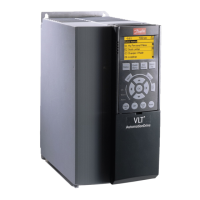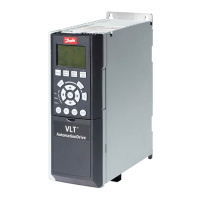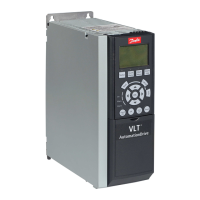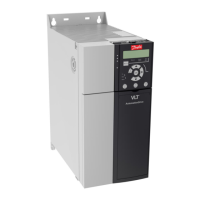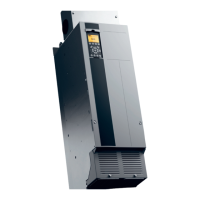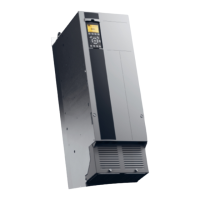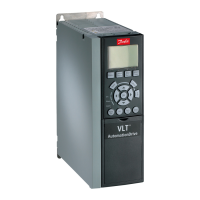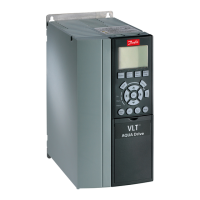Illustration 3.21 Process PID Control Diagram
Parameter Description of function
7-20 Process CL Feedback 1 Resource Select from which Source (i.e. analog or pulse input) the Process PID should get its
feedback
7-22 Process CL Feedback 2 Resource Optional: Determine if (and from where) the Process PID should get an additional
feedback signal. If an additional feedback source is selected the two feedback signals will
be added together before being used in the Process PID Control.
7-30 Process PID Normal/ Inverse Control Under [0] Normal operation the Process Control will respond with an increase of the
motor speed if the feedback is getting lower than the reference. In the same situation, but
under [1] Inverse operation, the Process Control will respond with a decreasing motor
speed instead.
7-31 Process PID Anti Windup The anti windup function ensures that when either a frequency limit or a torque limit is
reached, the integrator will be set to a gain that corresponds to the actual frequency. This
avoids integrating on an error that cannot in any case be compensated for by means of a
speed change. This function can be disabled by selecting [0] “Off”.
7-32 Process PID Start Speed In some applications, reaching the required speed/set point can take a very long time. In
such applications it might be an advantage to set a fixed motor speed from the frequency
converter before the process control is activated. This is done by setting a Process PID
Start Value (speed) in 7-32 Process PID Start Speed.
7-33 Process PID Proportional Gain The higher the value - the quicker the control. However, too large value may lead to
oscillations.
7-34 Process PID Integral Time Eliminates steady state speed error. Lower value means quick reaction. However, too small
value may lead to oscillations.
7-35 Process PID Differentiation Time Provides a gain proportional to the rate of change of the feedback. A setting of zero
disables the differentiator.
7-36 Process PID Diff. Gain Limit If there are quick changes in reference or feedback in a given application - which means
that the error changes swiftly - the differentiator may soon become too dominant. This is
because it reacts to changes in the error. The quicker the error changes, the stronger the
differentiator gain is. The differentiator gain can thus be limited to allow setting of the
reasonable differentiation time for slow changes.
7-38 Process PID Feed Forward Factor In application where there is a good (and approximately linear) correlation between the
process reference and the motor speed necessary for obtaining that reference, the Feed
Forward Factor can be used to achieve better dynamic performance of the Process PID
Control.
Introduction
VLT
®
AutomationDrive FC 300 Design Guide, 0.25-75 kW
34 MG33BE02 - VLT
®
is a registered Danfoss trademark
3
3
http://www.RSPSupply.com/p-21462-Danfoss-131B8966-VLT-Automation-VT-Drive-VFD-FC301-230V-5-HP.aspx
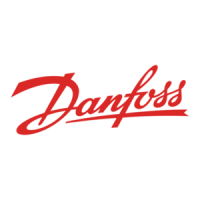
